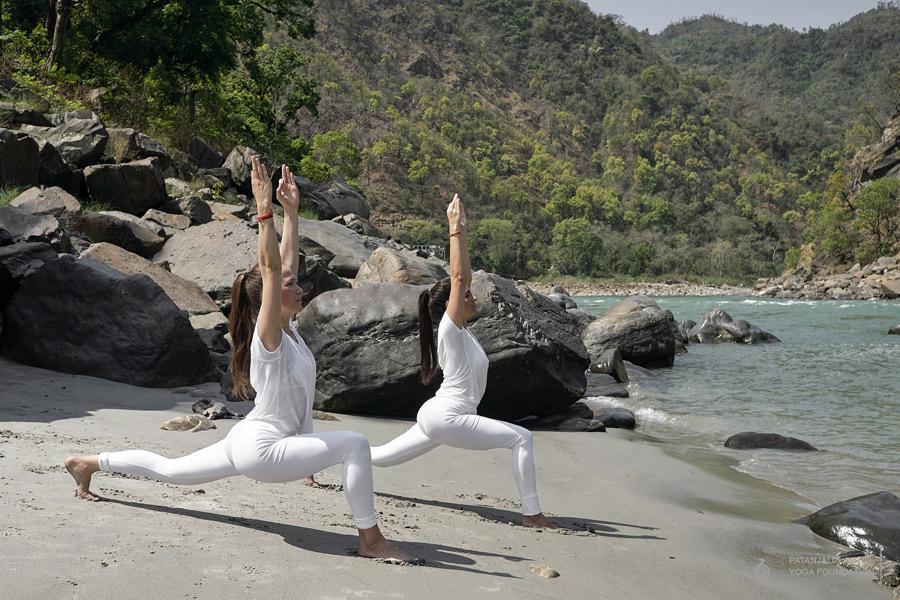Introduction: The Importance of Breath in Yoga and Life
Breath is the bridge between the body and the mind, influencing both physical health and emotional well-being. Yet, we often take it for granted, breathing unconsciously and missing the profound effects of mindful breathing. In yoga, breath is far more than a mere physiological function—it is seen as the life force, or prana. The practice of Pranayama, which focuses on controlling the breath, helps balance this life force and align the mind and body. By practicing conscious breathing techniques regularly, you can unlock mental clarity, emotional stability, and physical health, paving the way for a more balanced life.
What is Pranayama? Overview of Yogic Breathing Techniques
Pranayama, derived from the Sanskrit words “prana” (life force) and “ayama” (control or extension), refers to the control of breath. It is a key component of yoga, designed to harmonize the mind, body, and spirit. Unlike regular breathing, Pranayama emphasizes mindful, deliberate inhalation, retention, and exhalation, helping practitioners regulate their energy and emotions.
There are various types of Pranayama, each with specific benefits:
Nadi Shodhana (Alternate Nostril Breathing): Cleanses energy channels and balances the mind.
Kapalabhati (Cleansing Breath): Detoxifies and energizes the body.
Ujjayi (Victorious Breath): Promotes calmness and concentration.
Bhramari (Bee Breath): Relieves stress and tension through vibration.
Sheetali (Cooling Breath): Reduces body heat and helps with anxiety.
These techniques, though simple, have a profound impact on physical and mental well-being.
Scientific Benefits of Controlled Breathing: Stress Relief, Improved Concentration, and Enhanced Immunity
Modern science increasingly acknowledges the benefits of conscious breathing practices. Numerous studies confirm that Pranayama can improve both physical and psychological health. Here are some ways controlled breathing can benefit you:
Stress Relief and Emotional Regulation
Deep breathing activates the parasympathetic nervous system, which counters the body’s fight-or-flight response. As a result, Pranayama can lower cortisol levels (the stress hormone) and promote relaxation. Practicing breathing exercises regularly helps in managing anxiety, depression, and emotional imbalances.
Improved Focus and Mental Clarity
Breathing exercises increase the supply of oxygen to the brain, enhancing cognitive function. They improve focus, memory, and decision-making skills by reducing brain fog and mental fatigue. This makes Pranayama a powerful tool for students, professionals, and anyone seeking better concentration.
Boosted Immunity and Better Respiratory Health
Regular Pranayama practice enhances lung capacity and improves respiratory efficiency. Techniques like Kapalabhati cleanse the respiratory system, while deep breathing strengthens the diaphragm. In the long run, these practices can boost immunity, making the body more resilient to infections and chronic illnesses.
Simple Pranayama Exercises for Beginners
If you’re new to Pranayama, starting with simple exercises can build a solid foundation. Here are a few beginner-friendly techniques:
Nadi Shodhana (Alternate Nostril Breathing)
Sit comfortably and close your right nostril with your thumb.
Inhale through the left nostril, then close it with your ring finger.
Exhale through the right nostril.
Repeat the process, alternating nostrils for 5–10 minutes.
Kapalabhati (Cleansing Breath)
Sit upright and take a deep breath in.
Exhale forcefully through the nose while contracting your abdominal muscles.
Let the inhalation happen passively.
Perform 30 quick breaths in succession and then take a long breath to relax.
Bhramari (Bee Breath)
Sit comfortably, close your eyes, and take a deep breath in.
As you exhale, hum like a bee, creating a vibration in your throat.
Focus on the sound and vibrations for 5–10 minutes.
These exercises are easy to incorporate into your routine and will provide immediate relaxation and clarity.
How to Incorporate Pranayama into Your Routine
Consistency is key when it comes to reaping the benefits of Pranayama. Here are some tips on how to integrate these breathing exercises into your daily life:
Start Your Morning with Pranayama: Begin the day with 10–15 minutes of focused breathing to boost energy and set a positive tone.
Practice Before Meditation: Use Pranayama as a preparatory step to calm the mind before meditation or yoga sessions.
Use Pranayama During Stressful Moments: A few deep breaths can instantly reduce anxiety during tense situations.
Wind Down in the Evening: Gentle Pranayama exercises before bedtime can promote restful sleep.
Track Your Progress: Keep a journal to note the physical and mental changes you experience over time.
Why Breathing is Central to Yoga Practice
In yoga, breath is the thread that connects movement, awareness, and mindfulness. It is said that when the breath wanders, the mind is unsteady, but when the breath is calm, the mind settles. This idea underpins the concept of prana, the vital life force that sustains us. Through Pranayama, practitioners can harness this life force, leading to inner peace and spiritual growth.
Moreover, synchronized breathing in yoga postures (asanas) ensures a smooth flow of energy, preventing fatigue and enhancing endurance. This is why controlled breathing is not only essential during yoga sessions but also in daily life.
Conclusion: Transform Your Life by Mastering Your Breath
The science of breath offers a powerful tool for transforming your life, both physically and mentally. Pranayama teaches us how to harness the power of our breath to achieve better health, emotional balance, and mental clarity. By incorporating these simple breathing practices into your routine, you can cultivate a calm mind and a resilient body, leading to a more fulfilling life.
Whether you’re a yoga practitioner or someone seeking a healthier lifestyle, mastering the art of breathing through Pranayama will unlock your full potential, enabling you to thrive in both body and mind.



